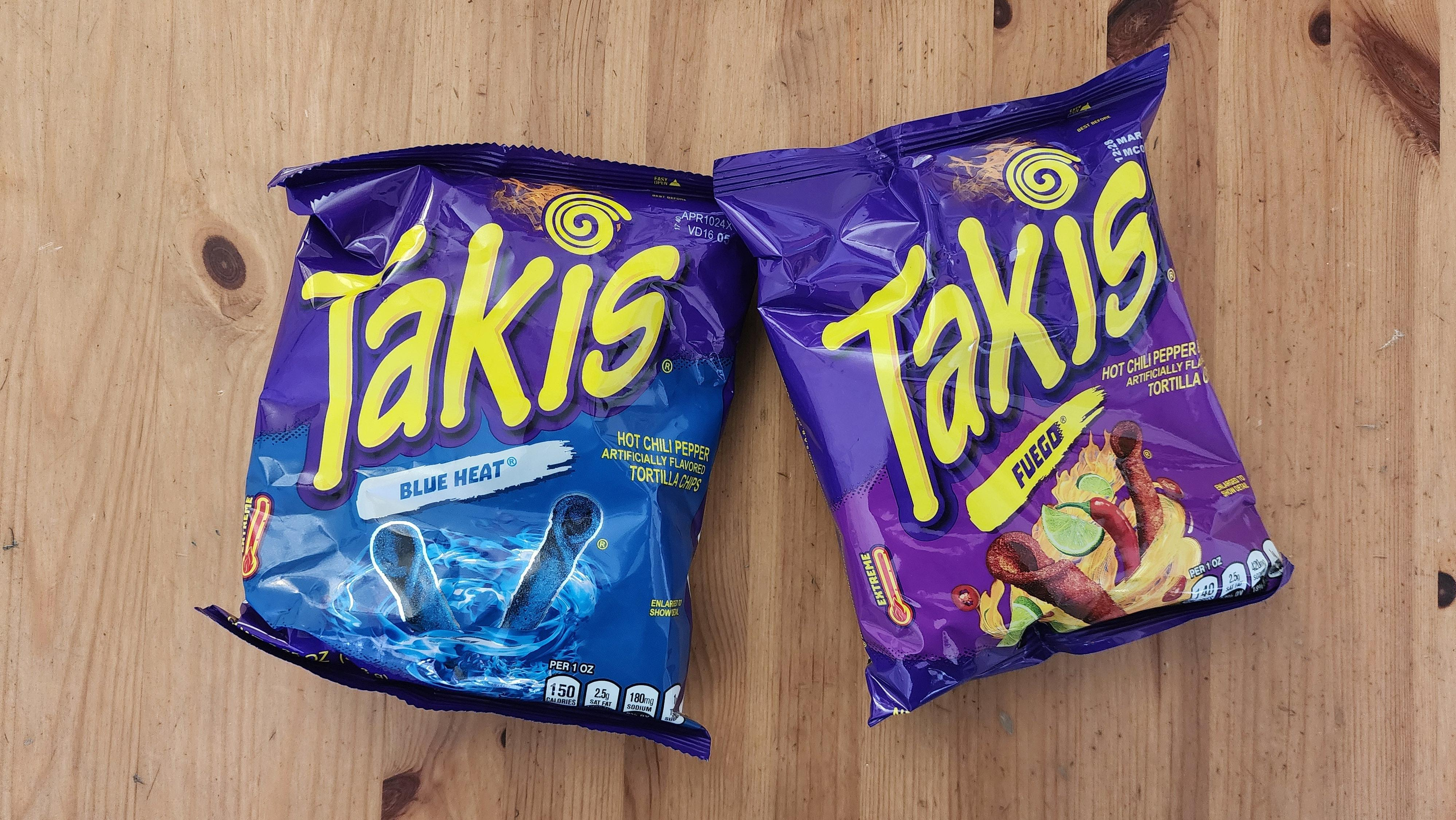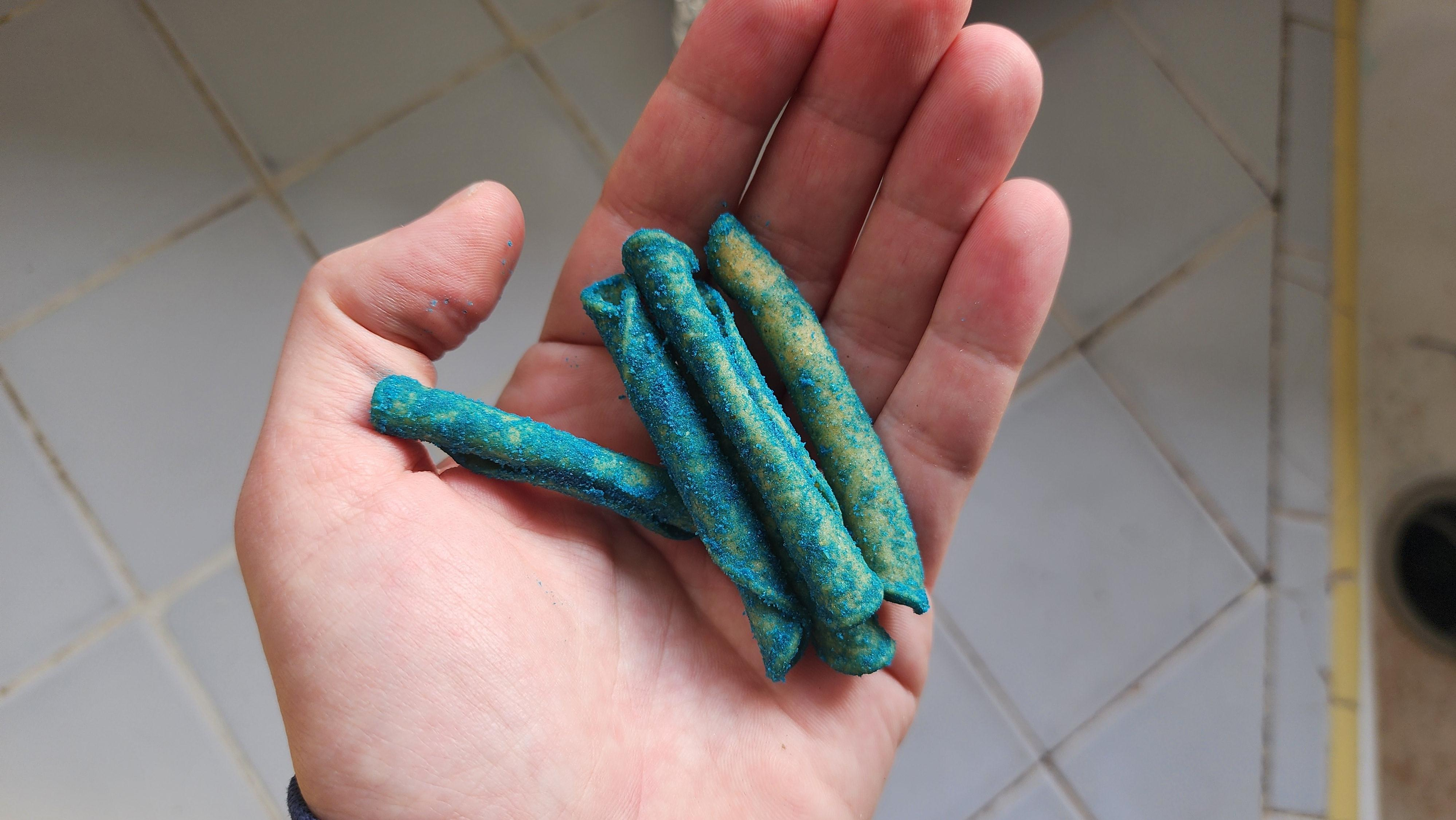Do Blue Heat Takis Really Taste Different From Fuego?
One bag is alarmingly blue, yes, but are these products ultimately the same thing?
Takis are a nuclear snack, both in taste and appearance. They're spicy, crunchy, and brightly acidic corn chips that pack a wallop of artificial flavor. They're addictive by design—the cumulative result of flavor enhancers, additives, and dyes. Needless to say, you won't find them at Whole Foods. And while no Takis are all-natural, perhaps the most artificial variety of all is Blue Heat.
There's something about blue that overtly signals the presence of food dye. Red and orange colored snacks tend to at least give the impression that the color could come from seasonings like paprika or chile powder, but nothing is naturally, starkly blue in the snack space. Blue Heat Takis contain a whole lot of Blue 1 Lake, a synthetic water-soluble pigment. It can turn your urine blue, and apparently people are reporting that their shits are turning blue, too.
What does "Blue Heat" even mean? Well, these chips are labeled as a more intense version of Takis' original Fuego flavor. Per the Takis website,
Some legends say that blue flames burn the hottest of all. It's time to put that to the test. Takis Blue Heat rolled tortilla chips are like a fireball for your mouth. A furnace for your taste buds. A sun flare for your face. Get ready for a sensory experience so intense it may be our most extreme flavor yet.
Quite the bold claim, but is it true? I did a taste test of Blue Heat Takis and Fuego Takis to find out.
What do Blue Heat Takis Taste Like?
Before we taste, let's examine the ingredients. Takis are made by processing corn flour with lime, hence the tangy flavor. Additionally, you won't recognize many of Takis' components as "natural." Here are the rest of the ingredients in a bag of Blue Heat Takis:
Seasoning [Maltodextrin, Citric Acid, Sugar, Potassium Chloride, Salt, Monosodium Glutamate, Hydrolyzed Soybean Protein, Natural And Artificial Flavors, Hydrolyzed Yeast, Soybean Oil, Onion Powder, Blue 1 Lake, Sodium Bicarbonate, Chili Pepper (Chile), Disodium Inosinate, Disodium Guanylate, Tbhq (Antioxidant)]
These are the same ingredients listed in Fuego Takis, too—just swap the blue dye for red and yellow. In short, it looks like there's no difference at all in how they're constructed. But, hold up, peep the nutritional content: Per 28-gram serving, Fuego Takis have considerably more sodium (420mg) than Blue Heat (180mg). After tasting both, I really think the difference comes down to salt.
Because Blue Takis feature less salt, you're getting a more straightforward lime and chili taste. Fuego, meanwhile, is slightly more addictive in that typical snack chip way. The initial hit of Fuego Takis is intense, but salty. You can actually sense the morsels on your tongue. Taste each Taki flavor back to back, and you'll find that one is much more seasoned than the other. It's not just flavor, it's the textural difference of all that seasoning, too.
So, is there a difference between Takis Fuego and Takis Blue Heat? The answer is yes. One is saltier. Perhaps the levels of acid and heat are adjusted as well, but the only truly noticeable difference between the two is the lack of sodium in Blue Heat. Without that salt, the chili and lime flavor feels more pure and, indeed, more intense. The brand makes good on that promise—it's just not the overwhelming jolt of blue flame heat that the name would imply.
Personally, I think Fuego Takis are much better. Sodium is the best flavor enhancer of all, and without it, snacks just feel less complete.

